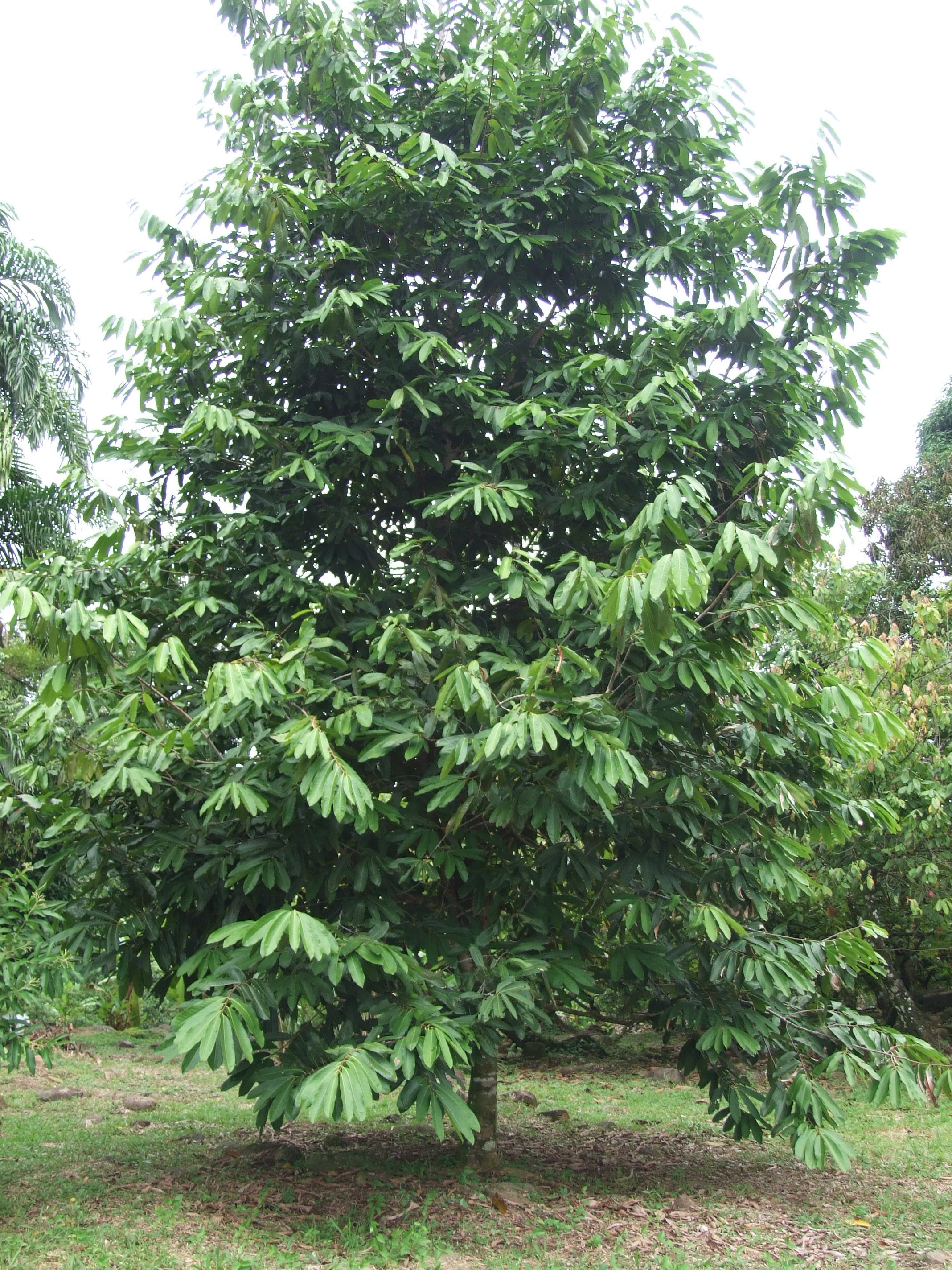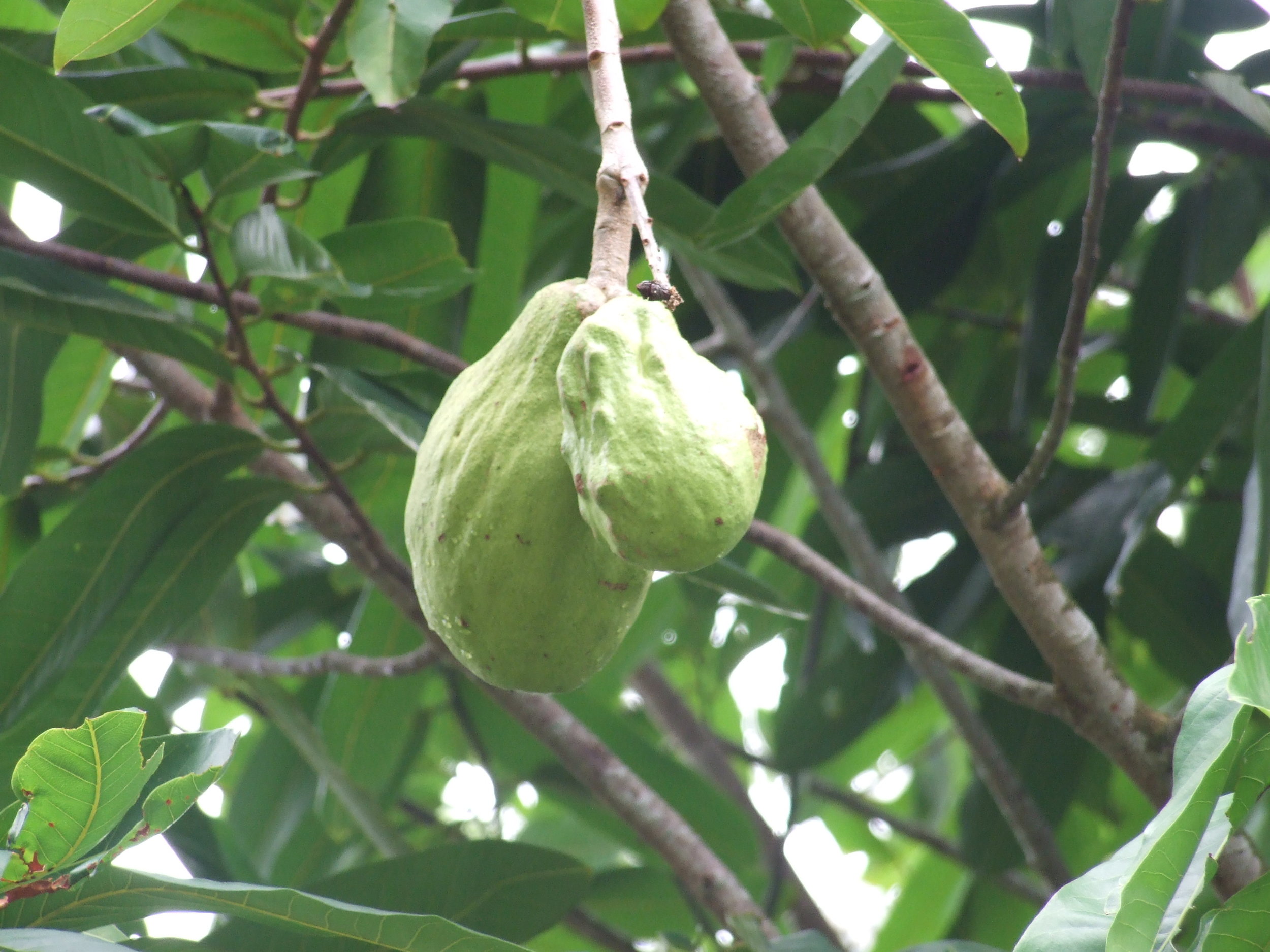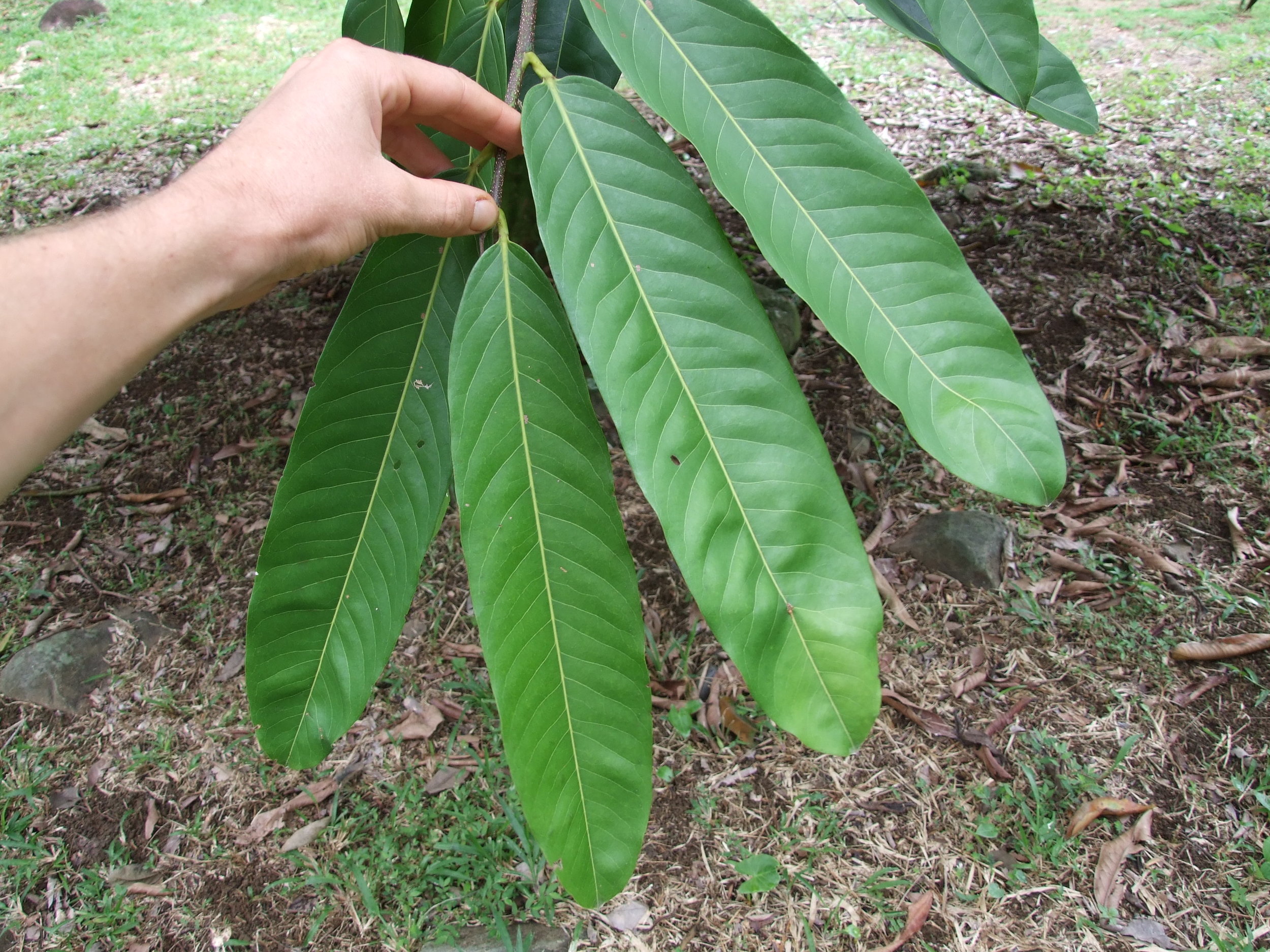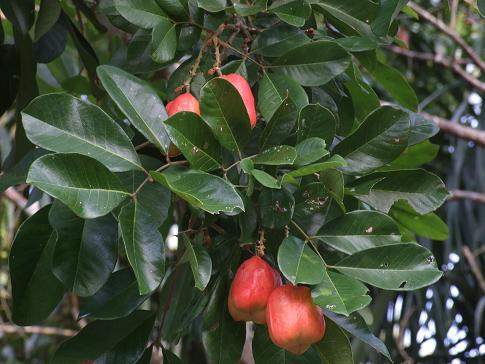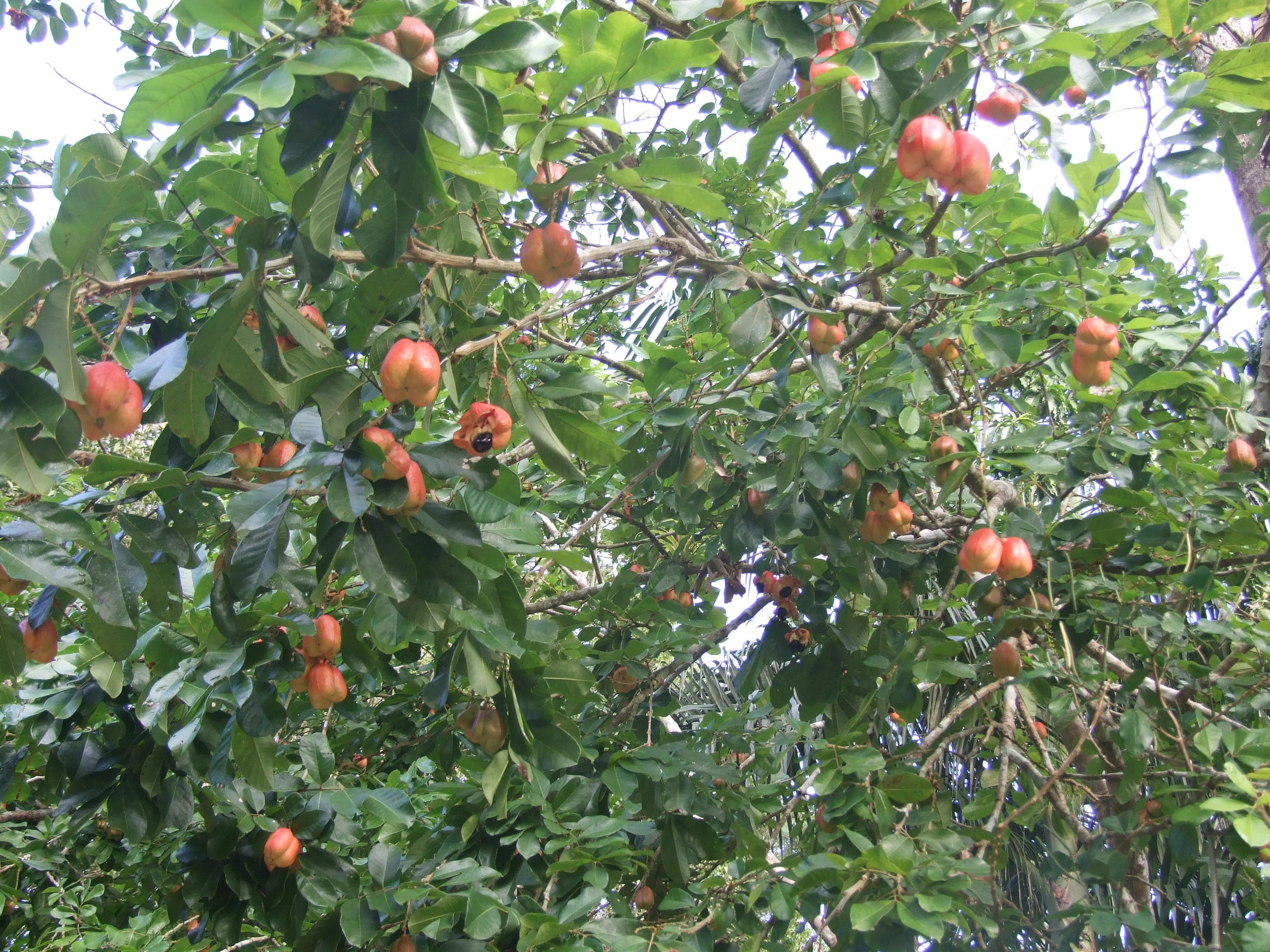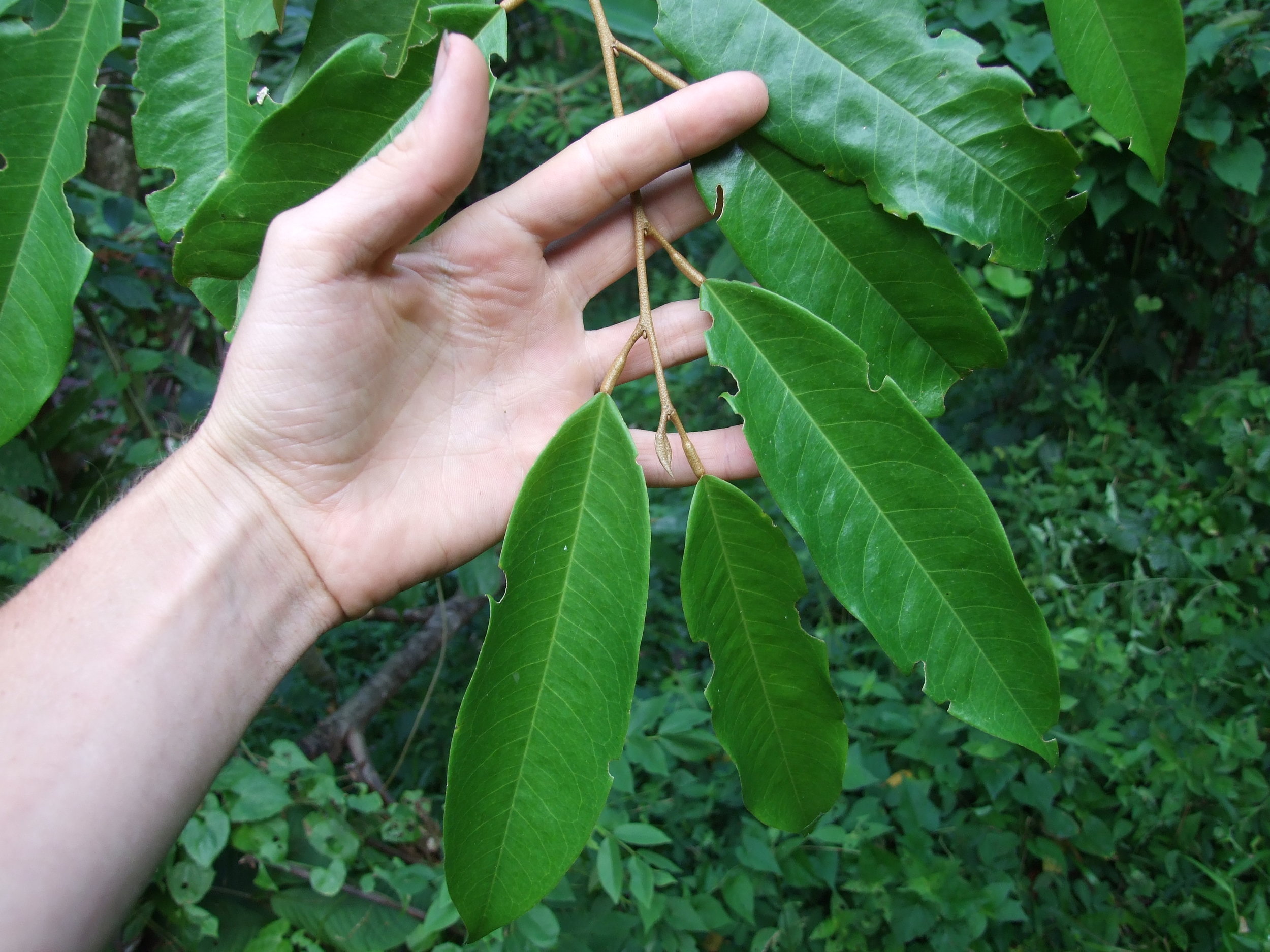Apocynaceae, Tabernamontana spp., Unknown species, Bola de mono
I found this Tabernamontana on an island off the northern caribbean coast of Panama.
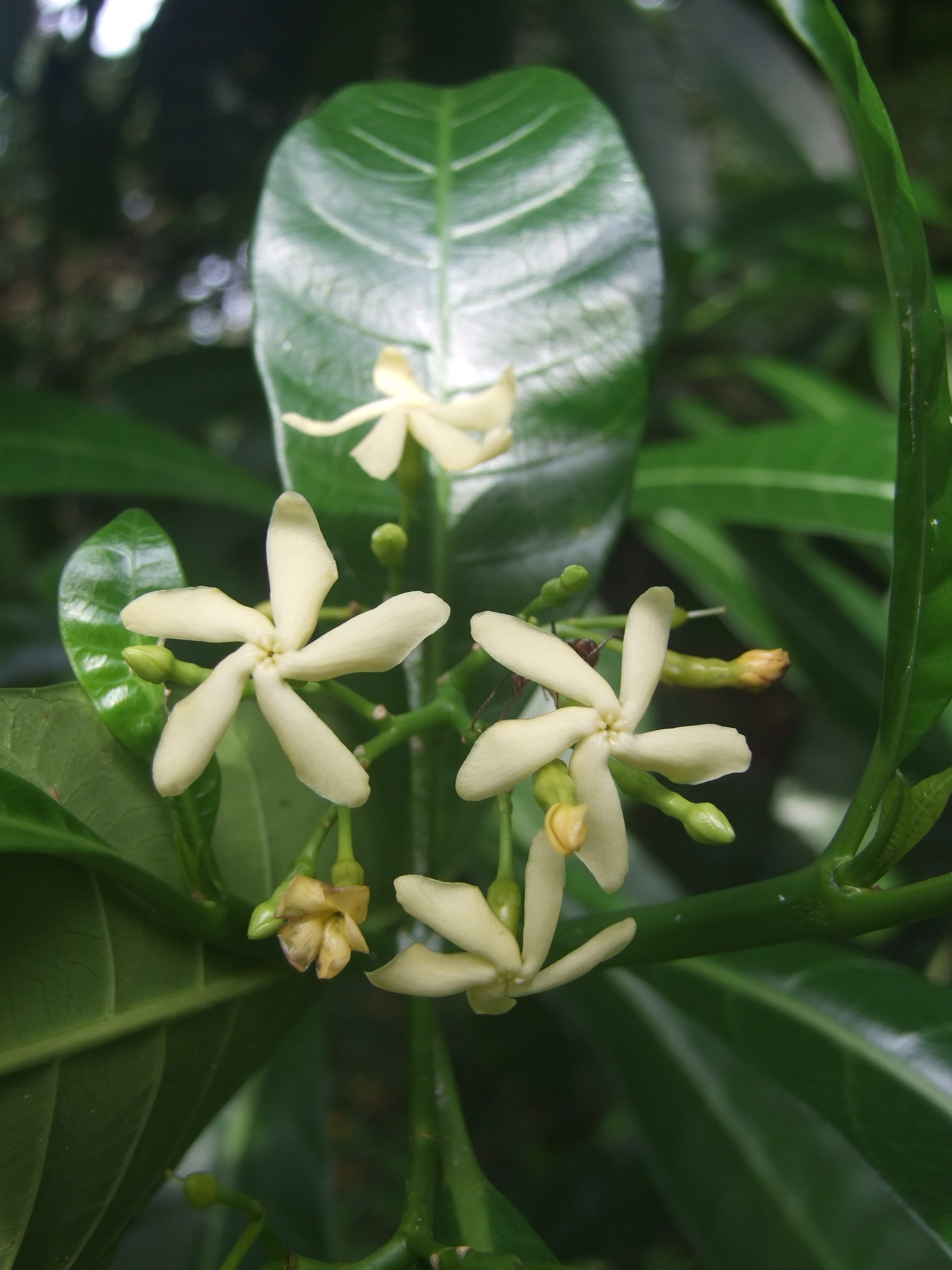
Bromaliaceae, Ananas comosus, Pineapple, Pina
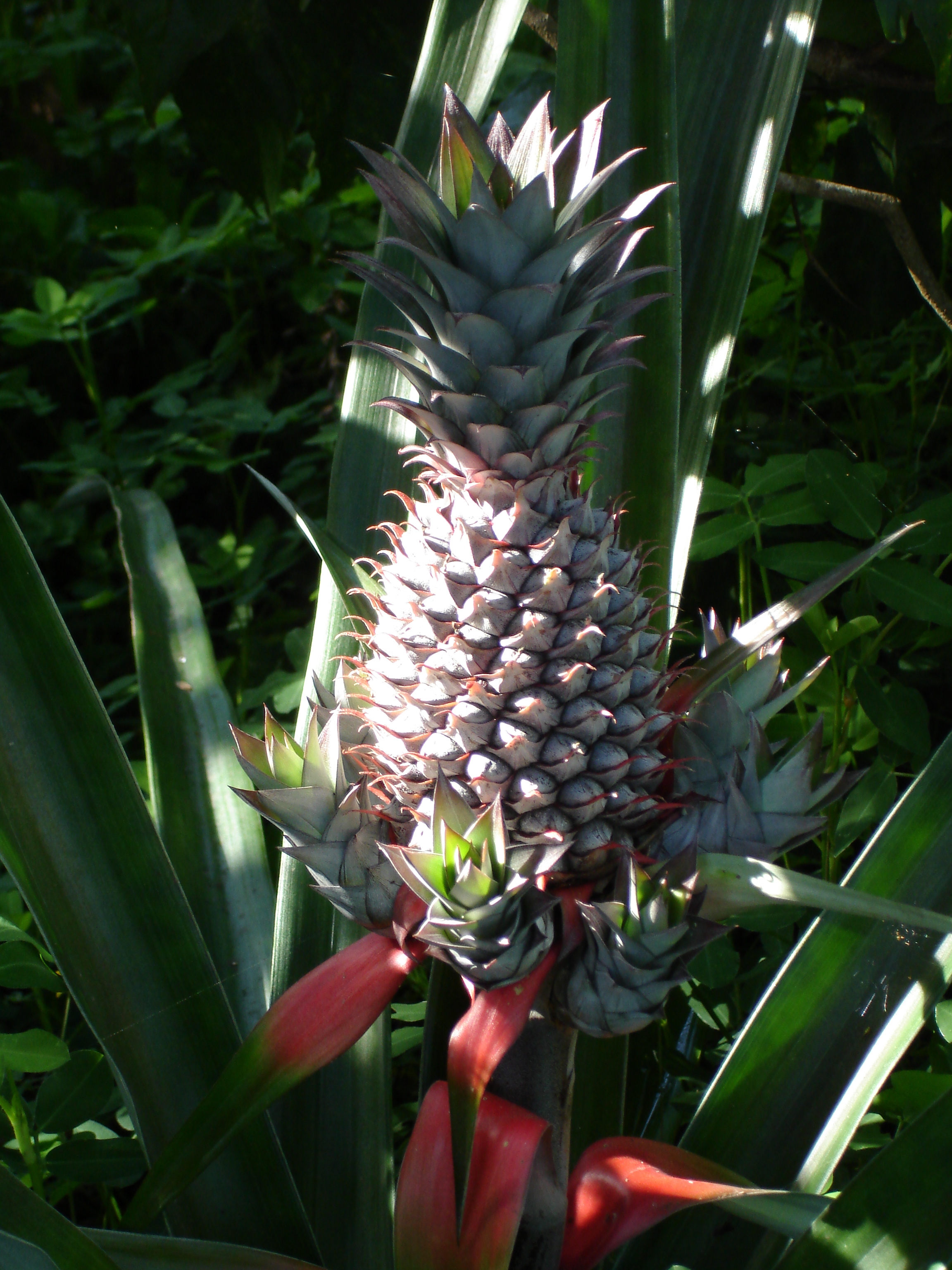 Pineapple is technically a perennial herb, native to the lowlands of northern South America. The pineapple has been cultivated thereabouts since pre-Colombian times. It first spread to Central America and was then introduced to the rest of the tropical world by the Portuguese and Spanish.
Pineapple is technically a perennial herb, native to the lowlands of northern South America. The pineapple has been cultivated thereabouts since pre-Colombian times. It first spread to Central America and was then introduced to the rest of the tropical world by the Portuguese and Spanish.
A dry, tropical climate is ideal for Pineapple production. The fruit is very drought-resistant but sensitive to frosts, therefore best grown in lowland regions near the sea. The pineapple has no seed and is propagated by the spiky crown that grows out the top of the fruit.
The fruit contains a mixture of protein-digesting enzymes that is used in treating inflammation and swelling (post-traumatic and post-operative oedemas). The strong leaf fibers are used in the textile industry. In Panama, indigenous populations use the fiber of an undomesticated, longer-leafed, native pineapple variety.
Bombacaceae, Pachira (Bombacopsis) glabra, Saba nut, American chestnut
I have about fifteen trees growing from seed I collected from a few trees I found planted along the street in a middle class neighborhood in San Jose, Costa Rica. In addition to this tree there were tropical olives (Simarouba glauca), citrus and macadamia nuts planted as street trees in the same neighborhood.
It is a small evergreen tree 4-6 m tall. The fruits are semi-woody capsules which stay green even when ripe. A pod contains many edible seeds which can be consumed raw or toasted/roasted/boiled. Considered to be one of the more notable underappreciated tropical food crops.
Like many of the Bombacaceae species P. Glabra has a very fat trunk to store water. Just after germination the girth of the trunk becomes noticeable, almost disproportional to the rest of the tree.
In Brazil the Saba nut is a fruit tree, cultivated as an ornamental in south-eastern areas of the country. It is not very frequent in its natural habitat, the pluvial Atlantic forests from Pernambuco to Rio de Janeiro and the flood plain forests of Para and Maranhao.
Dioscoraceae, Dioscorea mexicana
I found this peculiar vine growing on isla Cebaco, off the Pacific coast of Panama. It looks very closely related to Dioscorea elephantipes, but thank you to a reader I think it may be Dioscorea mexicana. As you can see in the photos, it has this very odd knobby, woody, stump. The vine, which you can see better in the second photo, can be seen growing out of the right hand side of the stump. These odd protrusions are reminiscent of a dinosaur. Unfortunately I didn't get photos of the leaves. I did, however, collect a few nodes of the vine itself (in addition to the stump) and am expecting it to sprout back soon, as it appears to be a fairly resilient plant. .

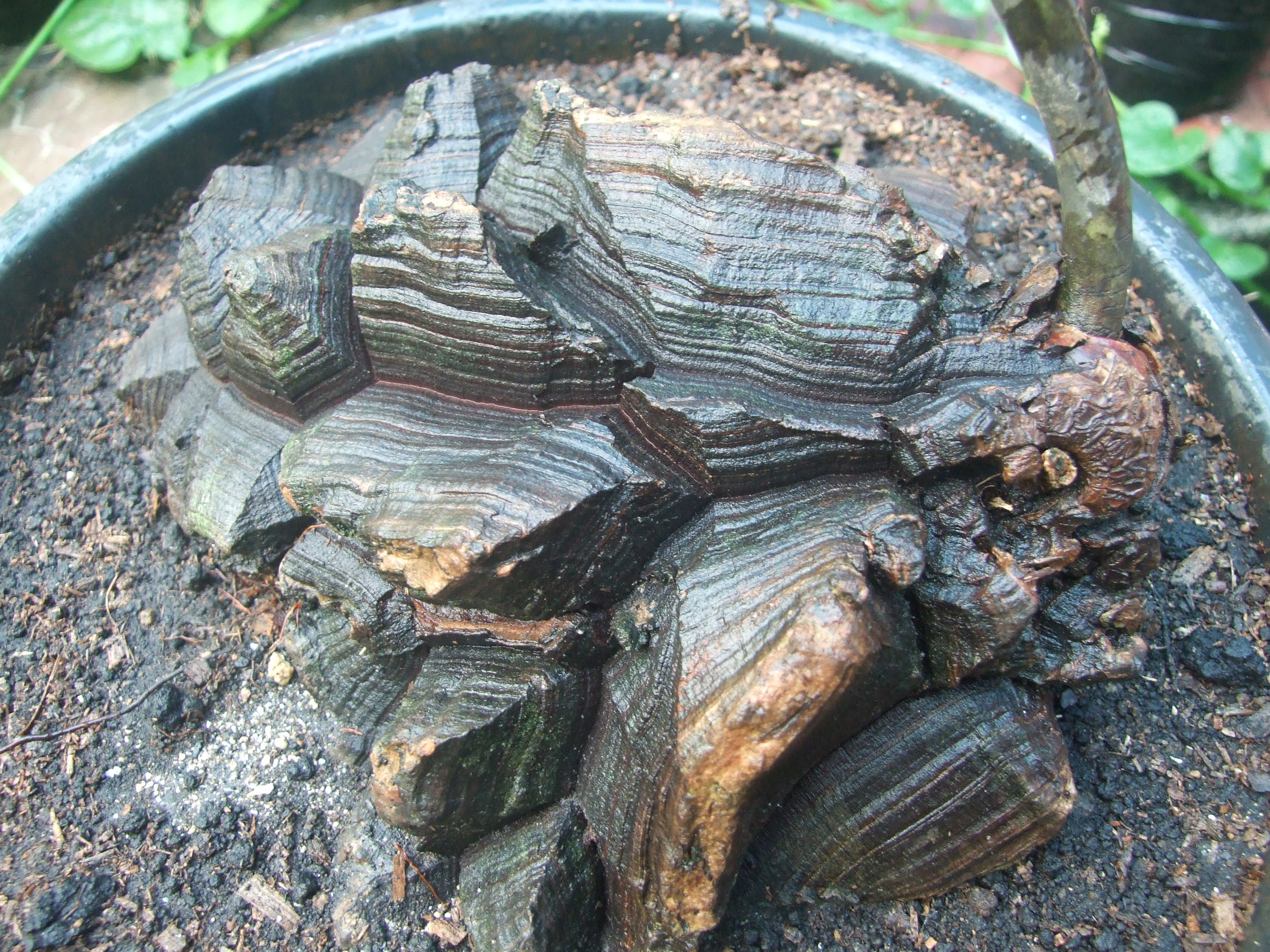
Michelia alba - White Champak, Shenbagam (Tamil), Pak-Lan, Banana Shrub, Cempaka Putih, Bai Yu Lan
Sapindaceae, Blighia sapida, Akee, Seso Vegetal
Akee is native to and widely cultivated on the East coast of Africa. The English brought it from there to their colonies in the Caribbean where it is now well integrated. It is the national fruit of Jamaica.
The tree ranges in height from 10 - 25 meters. The canopy is open and broad. The fruit is a capsule in the form of a pear. When the fruit is ripe it splits open, exposing three shiny black seeds encased in a creamy white colored flesh, which is the part consumed. The fleshy arial has been described as looking similar to a small brain.
Akee is a curious and potentially dangerous fruit. If the unripe fruit is opened and the aril is eaten it can be deadly, or sufficiently poisonous to induce a coma. When picked before it is fully ripe the fruit contains a chemical that limits the body’s ability to release the backup supply of glucose that is stored in the liver. That supply is essential because once the body uses up the sugar immediately available in the bloodstream, an event that usually occurs several hours after eating, it depends on this glucose to keep blood sugar levels normal until the next meal. Without it, blood sugar plunges dangerously. Enough people have died from eating unripened akee to make it illegal to bring the raw fruit into the U.S although that restriction doesn’t apply to canned and properly processed akee.
Symptoms of akee poisoning can include uncontrollable vomiting, dizziness, severe hypoglycaemia, convulsions, coma and even death.
However, if the fruit is left to ripen and open itself, the flesh poses no danger whatsoever. All other parts of the fruit should never be eaten. I remember visiting the Lancetilla botanical gardens Tela, Honduras. In their flier they discuss Akee, giving reference to the wife of the founder to the garden who had the mishap of consuming unripe Akee and, as a result, falling into a coma and eventually dying.
Akee can be eaten fried or boiled, typically with fish or meat. The texture is similar to eggs. A curious fruit indeed.
Akee is considered highly nutritious due to its high content of fats.
The tree thrives in a hot, humid climate and does not support long, dry periods. It is best grown in deep, well drained, soils. Liming is beneficial.
Bombacaceae, Durio zibethinus, Durian
Psidium Cattleianum - Strawberry Guava
Native to Brazil, Cattley Guava was brought to China by the Portuguese. From China it was introduced into Europe where it is known as Strawberry Guava, it can also be found cultivated in the Mediterranean, Hawaii, Florida, California, Mexico and throughout Central America. P. cattleianum is a very attractive shrub, however it can grow up to eight m in height. The leaves are dark brown and somewhat glossy, the bark is shiny and peeling. The fruit are 3-4 cm in diameter, considered by many to be the best species of guava. There are red and yellow varieties.
The Strawberry guava is rich in vitamin C and contains 4.5% sugar, 6% fiber and 1.1% protein.
Pouteria campechiana - Eggfruit, Canistel
Canistel originates in Mexico and Central America where it has been cultivated since antiquity. It is now very common in Cuba and tropical America from Florida to Uruguay, it can also be found in the Philippines and Malaysia. The tree is typically managed between five and eight meters high. The fruit is five to ten centimeters long and round, or in the form of a egg with a point. The pulp is firm and almost powder, likened to the texture of a hardboiled egg yolk. It has a very rich flavor and texture. A fantastic fruit, in my opinion. I have heard that cheesecake made out of the fruit pulp is exceptional. Due to its almost powdery texture, the eggfruit is highly versatile and can be integrated into virtually any kind of blended drink or dish.
The fruit contains up to 40% carbohydrates, 2.5% protein, and is great source of Vitamins A, B3, and C.
Canistel is adaptable to a wide variety of soils and can be grown in both tropical and subtropical climates, as long as there is no freeze. It is very drought tolerant.
